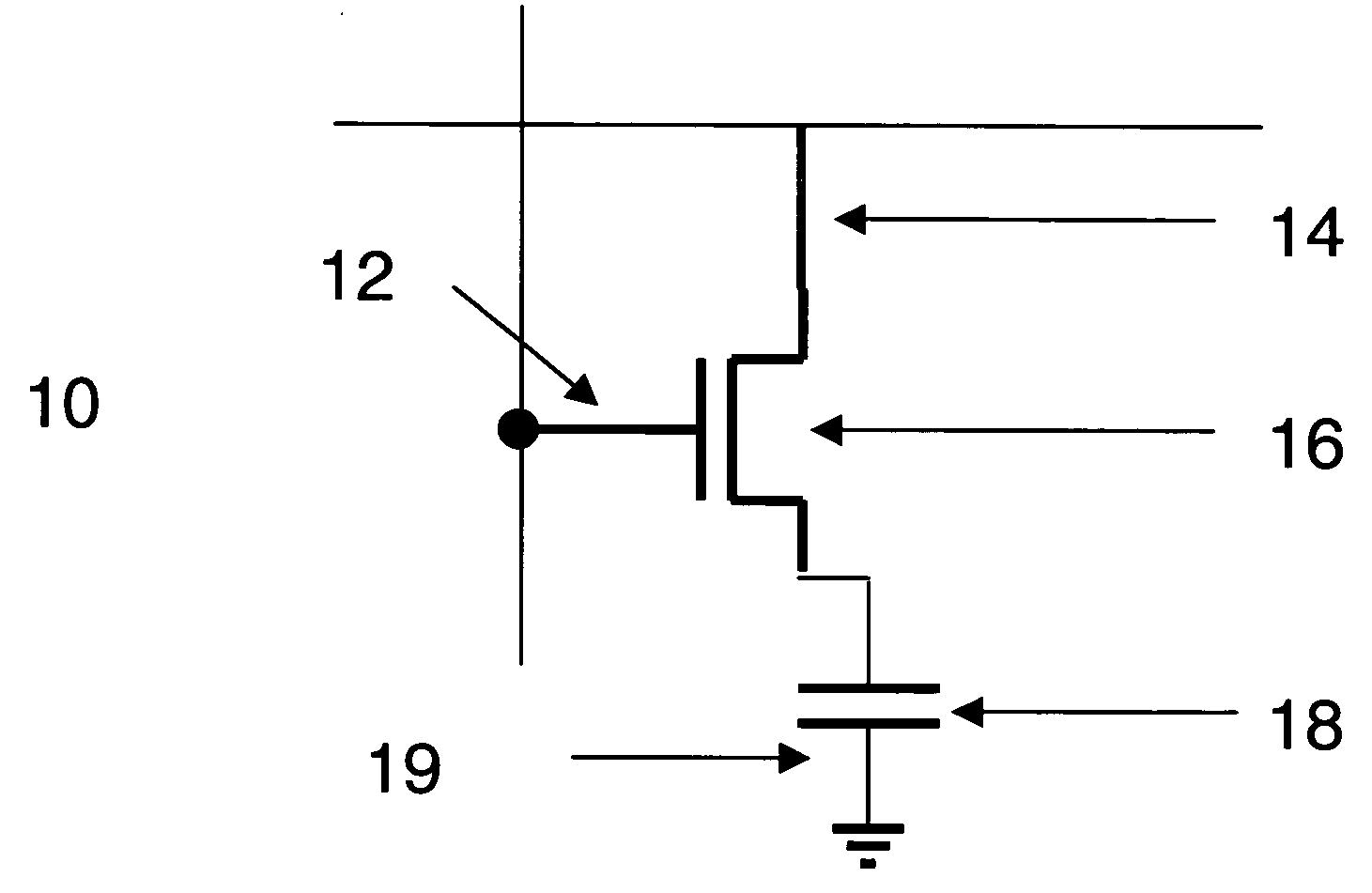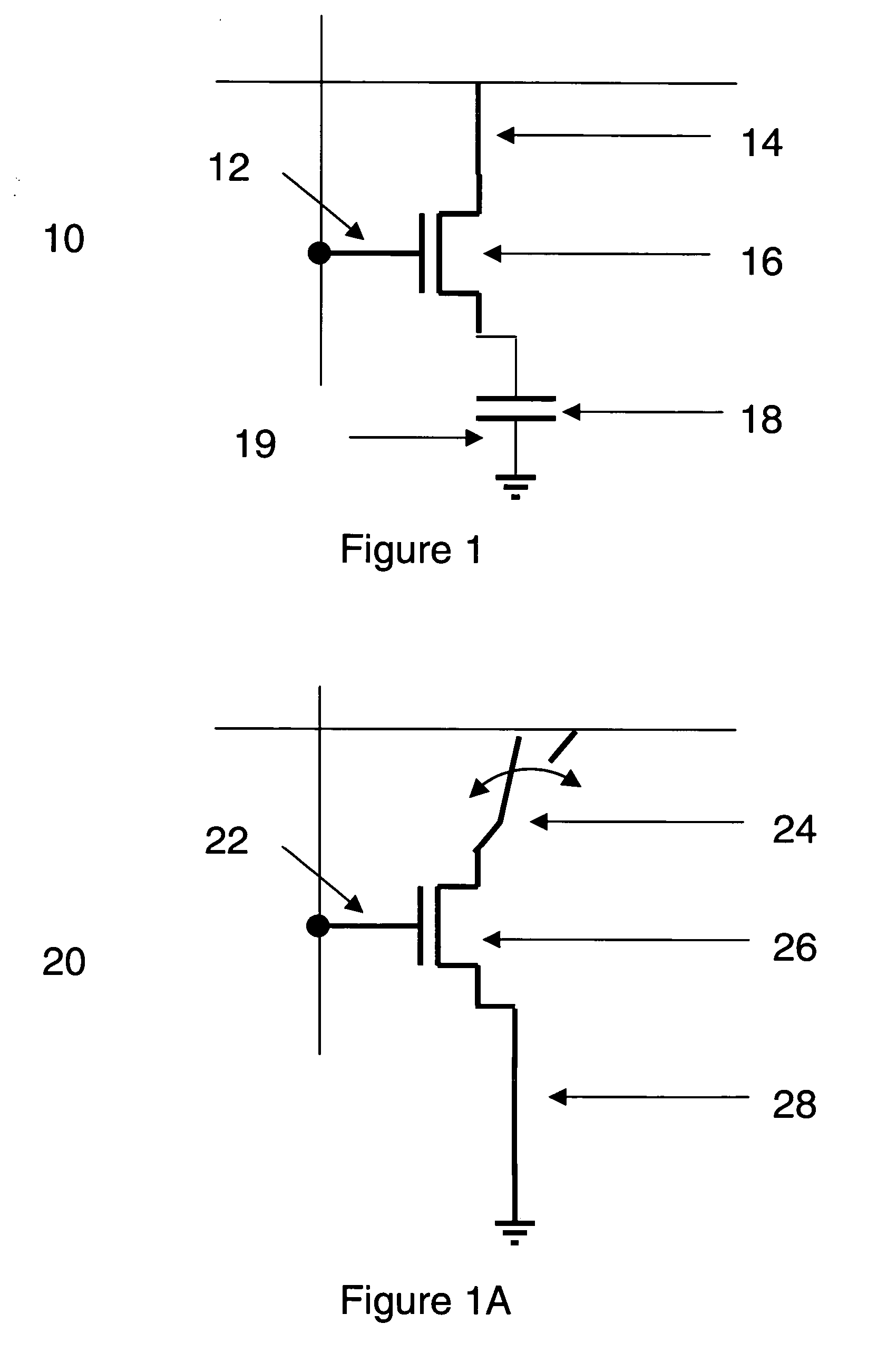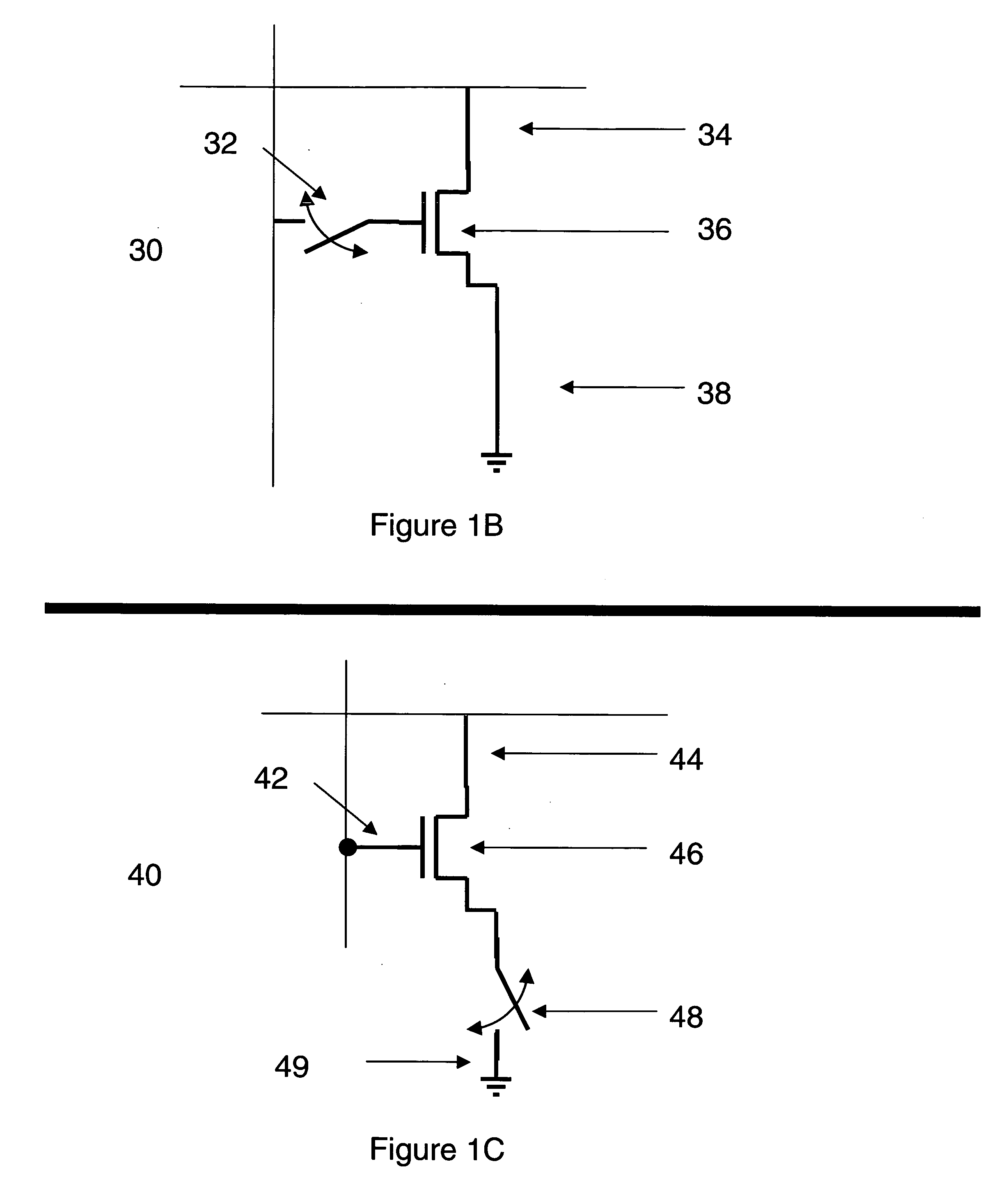One-time programmable, non-volatile field effect devices and methods of making same
a non-volatile field effect, one-time programmable technology, applied in the direction of discharge tube luminescnet screen, pulse technique, instruments, etc., can solve the problems of long write cycle (ms), low relative speed in comparison to dram or sram, and relatively low cost of rom
- Summary
- Abstract
- Description
- Claims
- Application Information
AI Technical Summary
Benefits of technology
Problems solved by technology
Method used
Image
Examples
embodiment 2
[0211]FIG. 17 is a flow chart of the process for integrating embodiment 1 or embodiment 2 nanotube structures;
[0212] The first step according to FIG. 17: A semiconductor structure is partially fabricated through at least device-level definition using industry standard processes and techniques (step 3002 of flow chart 3000).
[0213] The semiconductor industry standard fabrication is the same for nanotube embodiment 1 and nanotube embodiment 2. FIG. 19 illustrates a cross section of intermediate structure 3107 of the semiconductor structure after completion of step 3002, including nanotube embodiment 1 formed after completion of the standard semiconductor fabrication steps. The cross section of the semiconductor cell region of intermediate structure 3107 consists of NMOS FET devices with N+ drain regions 3126, and N+ doped source regions 3124 in p-type monocrystalline silicon substrate 3128. NMOS FET polysilicon gates 3120 control the FET channel region fabricated in the conventional m...
embodiment 1
[0218]FIG. 18 illustrates the substeps of step 3004 in flow chart form; the chart describes steps used to fabricate nanotube structure 3105, nanotube embodiment 1, on surface layer 3104, as illustrated in FIGS. 20A-F, where 3005A, 3005B, and 3005C are different views of nanotube structure 3105. Surface 3104 is the top surface of base 3102 that may contain a variety of structures with a variety of top surface layers. For example, the top surface layer 3104 may be a conductor, semiconductor, or insulating layer, or a combination of all three. (For example, intermediate structure 3107, shown in cross section in FIG. 19 contains a particular combination of materials and layers, with base region 3102′ corresponding to 3102, and top surface 3204′ corresponding to 3204.)
[0219] The first substep of step 3004 according to FIG. 18 is substep 3010; deposit conductor on partially fabricated semiconductor surface . . . This first step describes the deposition of conductor layer 3103 on surface 3...
embodiment 3
[0308] FIGS. 39A-D illustrate sequential cross sectional views of process steps for fabricating embodiment 3 nanotube structure 3900, with a release gate (node), creating a nanofabric that may be switched (written) from the OFF state to the ON state, and released from the ON state to the OFF state, for an unlimited number of times.
[0309] Embodiment 3 nanotube switch structure 3009 may be incorporated in transistor structure 4000, illustrated in FIGS. 40A-40E, creating a transistor that can be programmed (written) from OFF to ON, and released from ON to OFF and unlimited number of times. Instead of embedding structure 3900 in the transistor structure; structure 3900 may be used separately with a select transistor and an array release line to enhance memory system operation from an OTP function, to a read / program / write NRAM function by using structure 3900. An example is the NT-on-Source OTP memory array / system illustrated in FIGS. 23H″, 23I″, 25, and 25′ that may be changed to random...
PUM
 Login to View More
Login to View More Abstract
Description
Claims
Application Information
 Login to View More
Login to View More - R&D
- Intellectual Property
- Life Sciences
- Materials
- Tech Scout
- Unparalleled Data Quality
- Higher Quality Content
- 60% Fewer Hallucinations
Browse by: Latest US Patents, China's latest patents, Technical Efficacy Thesaurus, Application Domain, Technology Topic, Popular Technical Reports.
© 2025 PatSnap. All rights reserved.Legal|Privacy policy|Modern Slavery Act Transparency Statement|Sitemap|About US| Contact US: help@patsnap.com



